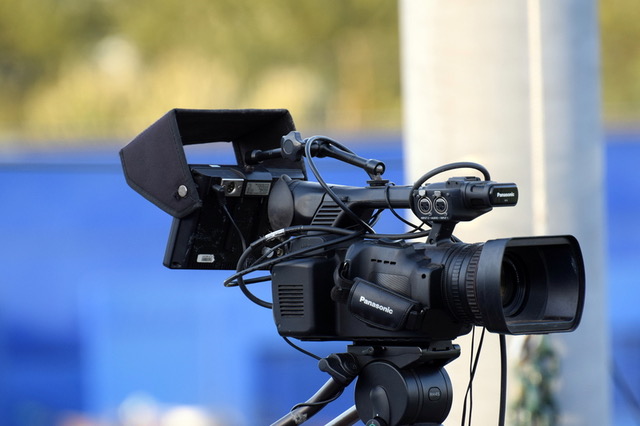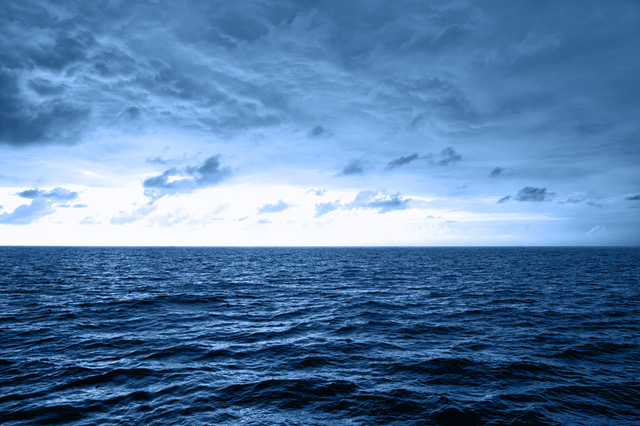
-
 Arteta's Arsenal come of age with Madrid masterclass
Arteta's Arsenal come of age with Madrid masterclass
-
None spared in Nigeria gun, machete massacre: survivors

-
 'No problem' if Real Madrid replace me: Ancelotti
'No problem' if Real Madrid replace me: Ancelotti
-
Inter dreaming of treble glory after reaching Champions League semis

-
 'No limits' for treble-hunting Inter, says Pavard
'No limits' for treble-hunting Inter, says Pavard
-
Inter off Bayern to reach Champions League last four

-
 Rice 'knew' Arsenal would dethrone Real Madrid
Rice 'knew' Arsenal would dethrone Real Madrid
-
US stocks fall with dollar as Powell warns on tariffs

-
 Arsenal oust holders Real Madrid to reach Champions League semis
Arsenal oust holders Real Madrid to reach Champions League semis
-
Arsenal defeat Real Madrid to reach Champions League semis

-
 AMD says US rule on chips to China could cost it $800 mn
AMD says US rule on chips to China could cost it $800 mn
-
Inter hold off Bayern to reach Champions League last four

-
 El Salvador rejects US senator's plea to free wrongly deported migrant
El Salvador rejects US senator's plea to free wrongly deported migrant
-
Newcastle thrash Crystal Palace to go third in Premier League

-
 Zuckerberg denies Meta bought rivals to conquer them
Zuckerberg denies Meta bought rivals to conquer them
-
Starc stars as Delhi beat Rajasthan in Super Over

-
 Weinstein asks to sleep in hospital, citing prison 'mistreatment'
Weinstein asks to sleep in hospital, citing prison 'mistreatment'
-
Amorim asks McIlroy to bring Masters magic to Man Utd

-
 Ruud keeps Barcelona Open defence on course
Ruud keeps Barcelona Open defence on course
-
Trump tariffs could put US Fed in a bind, Powell warns

-
 CONCACAF chief rejects 64-team World Cup plan for 2030
CONCACAF chief rejects 64-team World Cup plan for 2030
-
Putin praises Musk, compares him to Soviet space hero

-
 Son to miss Spurs' Europa League trip to Frankfurt
Son to miss Spurs' Europa League trip to Frankfurt
-
US senator in El Salvador seeking release of wrongly deported migrant

-
 Trump tariffs could put the US Fed in a bind, Powell warns
Trump tariffs could put the US Fed in a bind, Powell warns
-
US judge says 'probable cause' to hold Trump admin in contempt

-
 India opposition slams graft charges against Gandhis
India opposition slams graft charges against Gandhis
-
Nate Bargatze to host Emmys: organizers

-
 US Fed Chair warns of 'tension' between employment, inflation goals
US Fed Chair warns of 'tension' between employment, inflation goals
-
Trump touts trade talks, China calls out tariff 'blackmail'

-
 US judge says 'probable cause' to hold govt in contempt over deportations
US judge says 'probable cause' to hold govt in contempt over deportations
-
US eliminates unit countering foreign disinformation

-
 Germany sees 'worrying' record dry spell in early 2025
Germany sees 'worrying' record dry spell in early 2025
-
Israel says 30 percent of Gaza turned into buffer zone

-
 TikTok tests letting users add informative 'Footnotes'
TikTok tests letting users add informative 'Footnotes'
-
Global uncertainty will 'certainly' hit growth: World Bank president

-
 EU lists seven 'safe' countries of origin, tightening asylum rules
EU lists seven 'safe' countries of origin, tightening asylum rules
-
Chelsea fans must 'trust' the process despite blip, says Maresca

-
 Rebel rival government in Sudan 'not the answer': UK
Rebel rival government in Sudan 'not the answer': UK
-
Prague zoo breeds near-extinct Brazilian mergansers

-
 Macron to meet Rubio, Witkoff amid transatlantic tensions
Macron to meet Rubio, Witkoff amid transatlantic tensions
-
WTO chief says 'very concerned' as tariffs cut into global trade

-
 Sports bodies have 'no excuses' on trans rules after court ruling: campaigners
Sports bodies have 'no excuses' on trans rules after court ruling: campaigners
-
Zverev joins Shelton in Munich ATP quarters

-
 The Trump adviser who wants to rewrite the global financial system
The Trump adviser who wants to rewrite the global financial system
-
US senator travels to El Salvador over wrongly deported migrant

-
 UN watchdog chief says Iran 'not far' from nuclear bomb
UN watchdog chief says Iran 'not far' from nuclear bomb
-
Trump says 'joke' Harvard should be stripped of funds

-
 Macron vows punishment for French prison attackers
Macron vows punishment for French prison attackers
-
Canada central bank holds interest rate steady amid tariffs chaos


The tsunami detection buoys safeguarding lives in Thailand
Almost 1,000 kilometres off the Thai coast devastated by a tsunami 20 years ago, engineers lower a detection buoy into the waves -- a key link in a warning system intended to ensure no disaster is as deadly again.
On December 26, 2004, a magnitude 9.1 earthquake under the Indian Ocean triggered a huge tsunami with waves up to 30 metres (100 feet) high.
Only a rudimentary warning system was in place at the time, with no way to alert the millions of people living around the Indian Ocean in advance. More than 225,000 people were killed in a dozen countries.
In the years following the disaster, multiple governments developed a global tsunami information system, building on the US National Oceanic and Atmospheric Administration's (NOAA) network of six detection buoys in the Pacific.
Known as Deep-Ocean Assessment and Reporting of Tsunamis (DART), the system now has 74 buoys around the world.
Each floats on the surface while tethered to the seabed, monitoring signals from a seismic sensor on the ocean floor and changes in the water level.
Installed in some of the toughest working environments anywhere on the planet, the battery-powered buoys must be replaced every two years. Only 50 of the devices are currently operational but the network has been designed to provide coverage regardless.
The Thai research vessel M.V. SEAFDEC crew gently lowered a replacement buoy -- a yellow cylinder about two metres in diameter -- this month into the Indian Ocean 965 kilometres (600 miles) offshore.
- Five-minute warning -
The same team also sought to replace a closer buoy in the Andaman Sea, 340 kilometres from the coast, but were unsuccessful and will mount a new mission in the coming weeks.
Shawn Stoeckley, a mechanical engineer from buoy manufacturers Science Applications International Corporation (SAIC), calibrates the system from his laptop on board before it is deployed.
"I feel that it has a lot of purpose, that it can save coastal lives," he told AFP.
The 2004 tsunami killed more than 5,000 people in Thailand, according to official figures, with 3,000 missing.
Now the country's two DART buoys are linked by satellite to a nationwide network of 130 alarm towers equipped with sirens and loudspeakers that can broadcast in five languages in coastal provinces.
Residents in disaster-prone areas also receive an SMS alert of an imminent tsunami, warning them to evacuate quickly.
Before 2004, it would take anywhere from 15 to 50 minutes before an alarm could be issued, says Laura Kong, director of UNESCO's International Tsunami Information Center.
"Today it's typical we would get something within five to seven minutes," she said.
One day, say UN experts, the system will prove essential.
There is a "100 percent chance" of another tsunami on the scale of 2004 at some point, Bernardo Aliaga, UNESCO's head of Tsunami Resilience Section, told an anniversary conference, adding it "could be tomorrow or in 50 years or 100 years".
- False alarms -
Mobile phones have become ubiquitous and disaster apps widely available in the years since the tsunami, but locals say the towers are still vital.
Songsil Nodharith, 51, head of Khuek Khak village, helped residents to evacuate "without even grabbing their belongings" during a night-time false alarm last year and urged authorities to ensure that the towers were well maintained.
In Sri Lanka -- where 31,000 were killed in 2004, making it the second-worst-hit country -- more than three-quarters of the 77 tsunami warning towers the government subsequently installed are not operating because the communications equipment has become obsolete, the island's Disaster Management Centre chief Udaya Herath told AFP.
Mobile phone companies have instead identified some 70,000 "key contacts" in coastal areas, including resort managers, to receive warnings and evacuation orders in the event of impending danger.
Warnings have occasionally set off panic in Thailand, with locals and tourists rushing for higher ground, but residents have faith in the system.
The fishing village of Ban Nam Khem saw Thailand's worst destruction in 2004, with trawlers swept onto houses and 800 residents killed.
Manasak Yuankaew, 48, now head of the village, lost four members of his family that day.
"We have a saying here," he told AFP. "Fleeing 100 times is better than not fleeing that one crucial time."
A.Ruiz--AT
